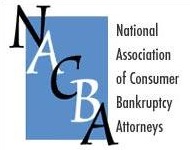A debtor’s right to strip off a wholly unsecured lien is not dependent on the debtor’s eligibility for a discharge, says the 8th Circuit BAP.
Hurray for Chapter 20.
Before 2005, a debtor was entitled to file Chapter 13 immediately following a Chapter 7 and address whatever debts had survived the 7. The 7 + 13 approach was nicknamed Chapter 20.
With BAPCPA came the requirement of a four year interval between a Chapter 7 discharge and a Chapter 13 filing that leads to a discharge. Falling home prices leave more formerly secured junior liens unsecured, and bingo, the debtor exceeded the debt limits in Chapter 13.
I have resisted the pull of individual Chapter 11’s in favor of the Chapter 20 approach. Judges in the Northern District have, up until quite recently, followed Judge Jellen’s approach in Tran, finding that a mortgage lien could be stripped in a case in which the debtor was not eligible for a discharge.
Yet I’ve been uneasy making plans for debtors in the absence of appellate authority for lien stripping in a no-discharge 13.
So I’m delighted that the 8th Circuit BAP decided August 29, 2011 in Fisette that the discharge played no part in the scheme for voiding utterly unsecured mortgage liens. My Bankruptcy Law Network colleague Minnesota bankruptcy lawyer Craig Andresen represented the debtor in Fisette.
It’s not a settled issue yet, but this is trending in a debtor friendly direction.
Image courtesy of Flickr.









This was a wonderful result…a nice victory for Craig and for debtors in general. Lien stripping was not even allow in MN prior to this decision much less available in a case where no discharge was available. I knew that if the issue was ever presented to the BAP they’d reverse the trend where it wasn’t allowed since everywhere else in the 8th Circuit it has been…I was pleasantly surprised on the holding for the second issue…that’s great. I had a conversation with the chapter 13 trustee about this holding yesterday and asked if her office had intended to appeal. She said they hadn’t discussed it fully yet….but my sense of it is “probably not”.
Here in MN the home prices aren’t quite what they are in CA so I think problems with eligibility due to unsecured debt limitations won’t be an issue. However…can you even be a debtor in chapter 13 if you exceed the debt limitations whether or not you are eligibile for a discharge?
The reason Chapter 20 is so useful is that debts that would push the debtor over the Chapter 13 debt limits can be discharged in the Chapter 7, and one need deal only with the claims that survive the 7 discharge, and the allowed secured claims of mortgage lenders up to the value of the property. Generally, it is the value of the property that is the effective limit on the secured claims in the subsequent 13. Values are falling fast enough that for most people, it isn’t a problem.